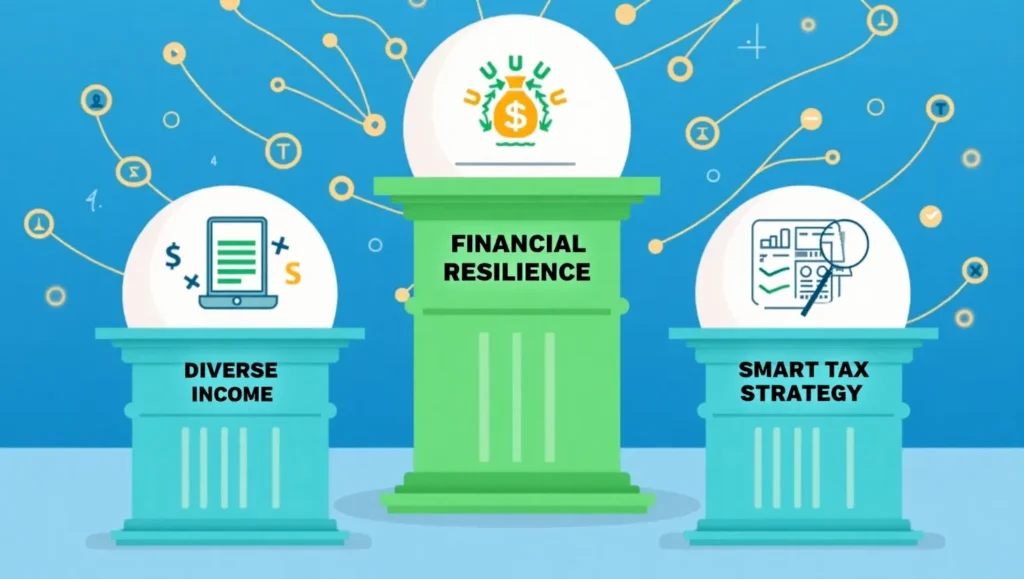The Evolving Workplace: Financial Planning for Hybrid & Future Work Models in 2025 (USA, UK, Canada)
Introduction: The traditional 9-to-5 office model is rapidly becoming a relic of the past. In 2025, the workplace across the USA, UK, and Canada is defined by unprecedented flexibility, with hybrid and remote work models becoming the new standard. This evolution impacts not only how we work but also how we plan our finances. From managing fluctuating incomes in the gig economy to optimizing expenses for a home office, adapting your financial strategy to the evolving workplace is crucial for stability and growth. This guide explores the financial implications of future work models and offers actionable planning tips.
Decoding the Future of Work: Beyond the Traditional Office
This section will define hybrid and future work models and their growing prominence.
From Remote to Hybrid: The New Norm
- Hybrid Model: Explanation of a mix of in-office and remote work days.
- Fully Remote: Working entirely from outside the traditional office.
- Gig Economy: Project-based, flexible work for independent contractors.
- Growth in 2025: Briefly discuss the increasing adoption of these models by companies and employees.
Financial Shifts in the Evolving Workplace
- Variable Income: Increased potential for fluctuating income, especially for gig workers.
- New Expense Categories: Home office costs, technology upgrades, co-working space memberships.
- Location Arbitrage: Potential to earn high salaries while living in lower-cost areas.
- Benefit Gaps: Understanding changes in employer-provided benefits (e.g., healthcare, retirement matching).
Financial Planning Pillars for Modern Work Models
Adapting your financial strategy is key to thriving in the new work landscape.
1. Building a Resilient Income Stream
- Income Diversification: Importance of having multiple income sources (primary job + side hustle, investments).
- Skill Development: Continuously investing in skills that are highly valued in remote or flexible roles (e.g., digital marketing, data analysis, specialized tech skills).
2. Optimizing Your Remote/Hybrid Budget
- Cost Analysis: Carefully track new expenses (utilities, internet, ergonomic setup) and new savings (commute, professional wardrobe).
- Dedicated Home Office Budget: Allocate funds for equipment and a productive workspace.
- Location-Based Budgeting: Adjust spending plans based on your physical location and its cost of living.
3. Navigating Tax Implications
- Tax Residency (Cross-State/Province/Country): Understanding where you owe taxes based on your physical presence and employer’s location.
- Home Office Deductions: Researching eligible tax deductions for remote work expenses (varies by USA, UK, Canada).
- Self-Employment Taxes: For gig workers, setting aside funds for self-employment taxes (e.g., quarterly estimated taxes).

Long-Term Security in the Evolving Workplace
Beyond immediate budgeting, securing your future requires foresight.
1. Rethink Retirement Savings
- Self-Directed Plans: Explore options like Solo 401(k)s, SEP IRAs (USA), SIPPs (UK), or RRSPs/TFSAs (Canada) for self-employed or gig workers.
- Automated Contributions: Ensure consistent savings even with variable income.
2. Secure Benefits & Insurance
- Independent Health Insurance: Crucial if employer coverage is reduced or unavailable.
- Disability & Life Insurance: Protect your income and dependents.
3. Build a Robust Emergency Fund
- Increased Buffer: Aim for 6-12 months of expenses due to potential income fluctuations.
- Accessibility: Keep funds in high-yield, easily accessible accounts.
Leveraging Technology for Financial Agility in 2025
Digital tools are your best friends in the new work landscape.
- Budgeting & Expense Tracking Apps: Tools that categorize spending and offer insights.
- Project Management & Invoicing Software: For freelancers, streamline payments and client management.
- Online Investment Platforms: For automated investing and easy portfolio management from anywhere.
- Digital Wallets & Payment Solutions: For seamless transactions across locations.

Conclusion: The evolving workplace in 2025, characterized by hybrid and flexible models, presents both exciting opportunities and unique financial challenges for professionals in the USA, UK, and Canada. By proactively adapting your financial planning—focusing on income diversification, optimizing your budget, mastering tax implications, and leveraging technology—you can build robust financial resilience. Embrace these strategies to navigate the future of work with confidence, ensuring stability and growth wherever your career takes you.

